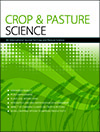CP20462Speed breeding in pulses: an opportunity to improve the efficiency of breeding programs
Most of the traditional pulse breeding programs take 10–15 years to release an improved cultivar; therefore, cycle time is the most powerful parameter for increasing genetic gain. In this context, speed breeding emerges as a technology that allows increased efficiency of the programs, reducing costs and the work required. We present and review different advances in pulse breeding programs and propose a speed breeding system for pea.





